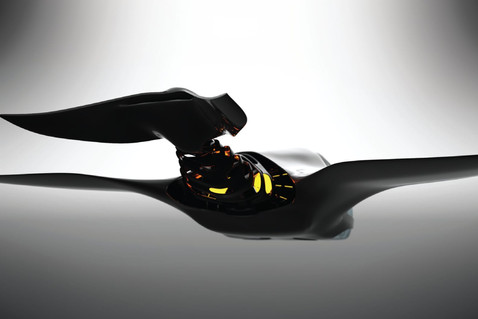
Amnis Bionic Submarine
Project
|
Released on May 18, 2021
Augmented Reality, WWF, Sky, Social Media Marketing, Conservation, Campaign, Spark AR, Micro-interaction
Sky & WWF Ocean Heroes
Supporting WWF and Sky’s multi-layer campaign to raise awareness for UK seas with an immersive AR experience that combines micro-interactions and vibrant visuals to inform and inspire action.
Project
|
Presented on February 17, 2012
Industrial Design, Concept, Camera, Photography, Filmmaking, Content Creation, University of Applied Arts Vienna, Die Angewandte
EXTU Camera System
Rethinking the intersection of point-and-shoot video cameras and professional systems with a modular design approach.
Project
|
Presented on June 24, 2011
Industrial Design, Concept, Automotive, Safety, Audi, Car Seat, University of Applied Arts Vienna, Die Angewandte
Audi Armadillo Seat
Conceptualizing an active safety system for the smallest passengers. Inspired by nature, distinguished by design.
Project
|
Presented on June 18, 2009
Industrial Design, Concept, Electric, Transportation, Formula One, Formula E, Racing, Car, University of Applied Arts Vienna, Die Angewandte
Green Venom: Electric F1 Concept
The 2008/09 season introduced some of the biggest rule changes in Formula One history. We wanted to take it a step further and imagine how a fully electric F1 car could look like.
Discover more like this
The Future of Ocean Exploration
The Amnis Bionic Submarine concept was created during the 2010/11 industrial design (ID2) semester at the University of Applied Arts, Vienna.
“For years we thought the oceans were so vast and the inhabitants so infinitely numerous that nothing we could do could have an effect upon them. But now we know that was wrong." David Attenborough
Amnis was conceived with the goal of creating a low-impact underwater vehicle that moves silently and minimizes harm to surrounding marine life. We drew inspiration from manta rays, the gentle giants of our oceans.
Taking cues from nature
Compared to traditional submarines, the Amnis concept relies on a propulsion system that incorporates artificial muscles and eliminates the need for propellers. Rotating parts not only create sound waves which can travel long distances underwater and disturb a variety of species, but also pose an immediate threat to nearby sea dwellers.
Metamaterials, such as carbon nanotubes, offer promising characteristics for use as an eco-friendly alternative to transforming electrical energy into motion. A combination of rigid structures and contracting metamaterials is embedded in a flexible mantle that emulates the wings of a manta ray. This forms a closed, low-maintenance system that doesn't leak pollutants like oil, further reducing negative environmental impact.
Conservation through immersion
The submarine features a panoramic capsule, offering expansive views of the underwater world. This design caters to both marine professionals and maritime tourists, providing a versatile tool for numerous applications. Researchers can use it to study marine life and ecosystems more closely, while hobby explorers can gain a deeper appreciation for the ocean's wonders.
This concept aims to bridge the gap between scientific research and public awareness, providing a greater understanding of marine environments and the importance of their conservation. By offering an immersive experience, it has the potential to inspire more people to engage with and protect our oceans.
00
00
00
00
00
00
00
00
00
Total calories
Total energy
Total fat
Saturated fat
Total carbohydrate
Sugar
Dietary fiber
Protein
Sodium
kcal
kJ
g
g
g
g
g
g
g
Nutritional values per portion
This information is intended to provide a basic overview of a recipe's nutritional quality, with actual values varying based on specific ingredient type, quality, regional and other factors. Learn more here
00
00
00
00
Ingredient loading
Ingredient loading
Ingredient loading
Ingredient loading
g
g
g
g
Ingredients
Portions
















